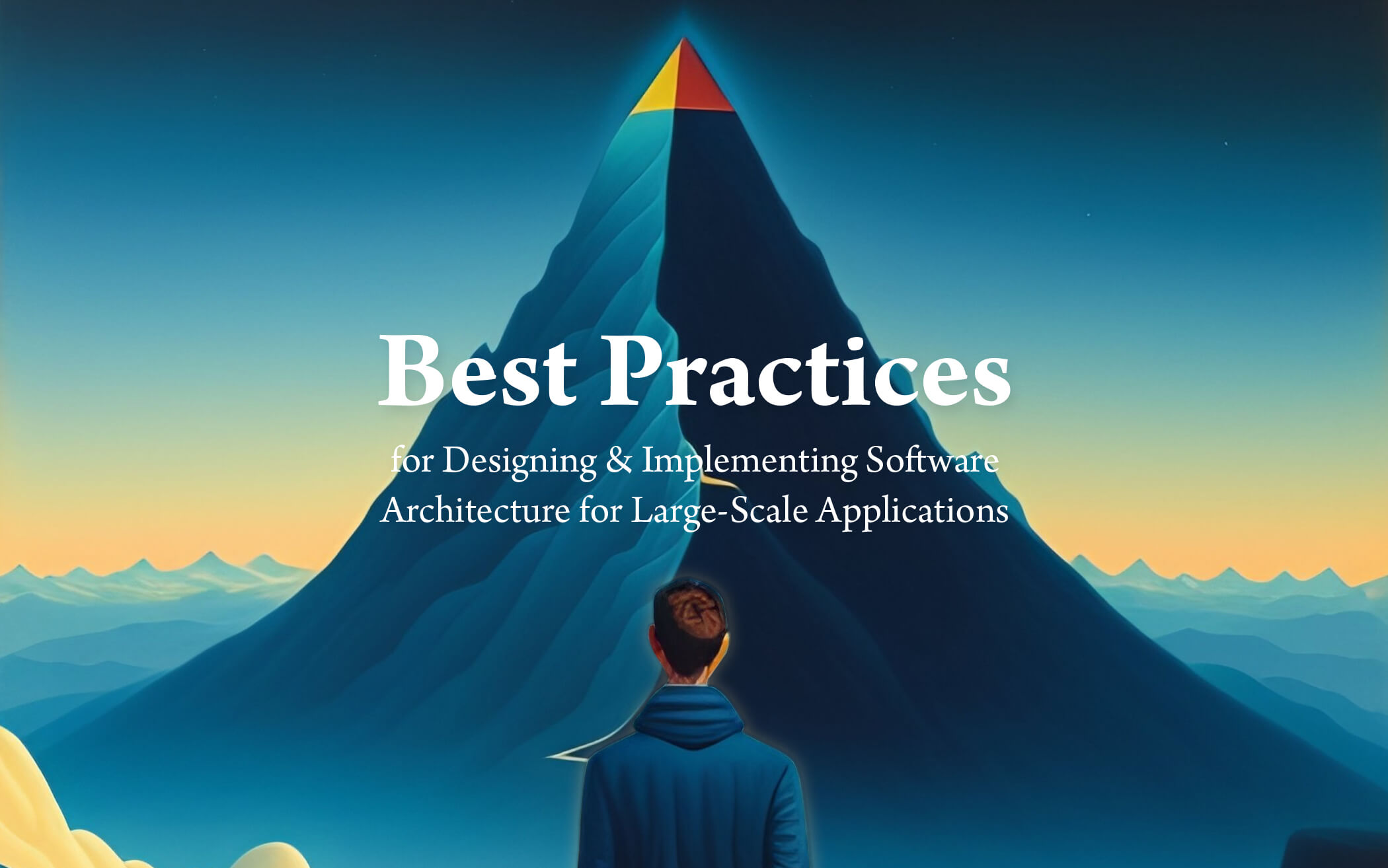Designing and implementing the architecture of a large-scale application can be a complex and challenging task. However, following the best software architecture practices can help ensure that the application is scalable, maintainable, and performs well. In this blog post, we will discuss the best practices for designing and implementing software architecture for large-scale applications.
Software architecture guidelines encompass a set of principles and best practices that guide the design and development of a software system. Here are some key guidelines:
- 1. Understand the Requirements: Before building the architecture design, it is essential to have a clear understanding of the application’s functional and non-functional requirements. For example, let’s say we are designing an e-commerce application. The functional requirements might include the ability to browse products, add products to the cart, and checkout. Non-functional requirements might include the ability to handle a large number of users simultaneously, secure user data, and provide fast response times.
- 2. Use a Modular Architecture: A modular architecture divides the application into smaller modules that are easy to develop, test, and maintain. Let’s take the e-commerce application example. We can divide the application into modules such as a product catalog module, a shopping cart module, and a checkout module. Each module should have a clear responsibility and should communicate with other modules through well-defined interfaces.
- 3. Choose the Right Technology Stack: Choosing the right technology stack is crucial for the success of the project. Let’s say we choose to build our e-commerce application using a microservices architecture. We would need to select technologies that support this architecture, such as Docker for containerization, Kubernetes for orchestration, Node.js for backend development, and ReactJs for frontend development.
- 4. Ensure Scalability: It’s essential to utilize a scalable software architecture for crafting robust and complex applications. For example, we could use a distributed architecture to ensure that the application can handle increasing amounts of data and users. We could also partition the data to ensure that the application can handle a large number of requests. Additionally, we could use caching techniques to improve performance.
- 5. Use Design Patterns: Design patterns are proven solutions to recurring design problems. For instance, we use the MVC (Model-View-Controller) pattern for our e-commerce application. The Model would represent the product catalog, the View would represent the user interface, and the Controller would handle the user’s interactions with the application.
- 6. Test Continuously: Testing is essential for ensuring the quality of the software. Continuous testing should be integrated into the development process, including unit tests, integration tests, and acceptance tests. For example, we could use a tool like Jest for unit testing and Cypress for end-to-end testing.
- 7. Ensure Security: Security is critical for any large-scale application and that’s why it’s crucial to implement best software architecture practices. The system structure should include measures to protect against common security threats, such as SQL injection, cross-site scripting, and unauthorized access. For example, we could use encryption to protect user data, and we could implement access controls to restrict access to sensitive data.
- 8. Monitor Performance: Monitoring the application’s performance is essential for identifying and resolving performance issues. The scalable software architecture should include monitoring tools that provide real-time performance data and alerts. For example, we could use tools like Prometheus and Grafana to monitor our e-commerce application’s performance.
- 9. Use Agile Methodologies: Agile methodologies promote iterative development, frequent communication, and collaboration among team members. This helps ensure that the architecture design meets the project’s requirements and that changes can be made quickly and efficiently. For example, we could use Scrum to manage our e-commerce application development process.
- 10. Document the Architecture: Documenting the architecture is crucial for ensuring that all team members have a clear understanding of the design.
Looking for an agile product team that can deliver exceptional results?
Look no further than Cygnis Media! Our expert team specializes in crafting, building, launching, and scaling stunning, user-friendly products with lightning-fast efficiency.
In conclusion, designing and implementing architecture for an enterprise-level application can be a challenging task, but following the best software architecture guidelines can help ensure the application’s scalability, maintainability, and performance. Understanding the requirements, using a modular architecture, choosing the right technology stack, ensuring scalability, using design patterns, continuous testing, ensuring security, monitoring performance, using agile methodologies, and documenting the architecture are all the best software architecture practices. By following these guidelines, developers can design and implement high-quality software that meets the project’s requirements and provides a great user experience. Furthermore, developers can use a scalable software architecture to enhance system performance, flexibility, and global reach of sophisticated applications.
 Web Applications
Build web apps using cutting-edge technology
Web Applications
Build web apps using cutting-edge technology
 Business Intelligence Apps
Empower your business with fast & actionable BI Apps
Business Intelligence Apps
Empower your business with fast & actionable BI Apps
 Mobile Applications
Build cross-platform apps for iOS and Android devices
Mobile Applications
Build cross-platform apps for iOS and Android devices
 Internet of Things Apps
Streamline your operations with cloud-based IoT apps
Internet of Things Apps
Streamline your operations with cloud-based IoT apps
 AI Products
Unlock the power of AI & ML with our expertise
AI Products
Unlock the power of AI & ML with our expertise
 Minimum Viable Product (MVP)
Mitigate risks & accelerate your project development
Minimum Viable Product (MVP)
Mitigate risks & accelerate your project development
 Enterprise Software
Build custom enterprise solutions for your business
Enterprise Software
Build custom enterprise solutions for your business
 Software as a Service (SaaS)
Scale your business with ease and cost-efficiency
Software as a Service (SaaS)
Scale your business with ease and cost-efficiency



